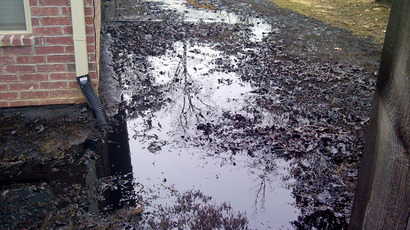Halliburton to pay $200k fine for destroying evidence in 2010 Gulf oil spill

Halliburton Energy Services to pay a maximum $200,000 fine for destroying evidence related to the 2010 Deepwater Horizon oil spill, which the Gulf of Mexico is yet to recover from. The company will also donate $55 million towards wildlife protection.
World's second-largest oilfield services company has pleaded
guilty to the misdemeanor charge and agreed to be subject to
three years of probation – apart from paying $200,000 fine – for
destroying internal probe computer simulations into the cementing
after the blowout at the Deepwater Horizon oil rig. Allegedly the
probe showed little difference between using six and 21
centralizers while cementing the damaged oil rig well.
This has become the third guilty plea by a company over the spill
in the Gulf of Mexico. Earlier the owners of the Deepwater
Horizon drilling rig, BP and Transocean Ltd, also pleaded guilty
over other accusations in connection with the Gulf oil spill, and
agreed to pay criminal fines of $1.26 billion and $400 million
respectively.
Houston-based Halliburton will be required “to continue its
cooperation in the government’s ongoing criminal
investigation” into the April 20, 2010, explosion of the
Deepwater Horizon drilling rig, the Justice Department statement
says.
The company also agreed to donate $55 million to the National
Fish and Wildlife Foundation, the Justice Department said. The
contribution was not court-mandated, but may have served to curry
favor with investigators.

The trial over the Deepwater Horizon oil spill is due to resume
in September and according to Halliburton’s April statement it is
in talks to settle private claims against the company before the
trial.
Halliburton was the cement contractor hired for the drilling rig
that exploded in the Atlantic Ocean in 2010. Eleven workers were
killed in the blast, which then dumped millions of gallons of oil
into the Gulf for nearly three months straight.
After the initial blast, Halliburton was asked to examine the
technical aspects of BP’s drilling well, establishing “an
internal working group to examine the Macondo well blowout,
including whether the number of centralizers used on the final
production casing could have contributed to the blowout,” the
Justice Department stated.
Production casings are heavy metal pipes used across the area of
the oil and natural gas reservoir, federal officials noted.
A program manager, in May 2010, was then told “to run two
computer simulations of the Macondo well[‘s] final cementing job
using Halliburton’s Displace 3D simulation program to compare the
impact of using six versus 21 centralizers.”
While Halliburton recommended BP use 21 centralizers, the company
decided to only use six after simulations indicated it would make
little difference. The program manager “was directed to, and
did, destroy these” incriminating results, Thursday’s
statement said.
Both Halliburton and BP have blamed each other for the cement’s
failing to seal the Macondo well, according to the Associated
Press.
The agreement, while pending court approval, could mean
Halliburton's weakness in negotiating over spill-related issues,
Tulane University law professor Edward Sherman told Reuters.
"Their willingness to plead to this may also indicate that they'd like to settle up with the federal government on the civil penalties," he said. "It may indicate a softening of their position."
A January 2013 study found that the spill, along with the
environmental effects, contributed to unexplained health problems
among children within 10 miles of the coastline. Parents in the
states of Louisiana and Florida told David Abramson, the director
of Columbia University’s National Center for Disaster
Preparedness, that they witnessed “unexplained symptoms among
their children, including bleeding ears, nose bleeds, and the
early start of menstruation among girls.”














